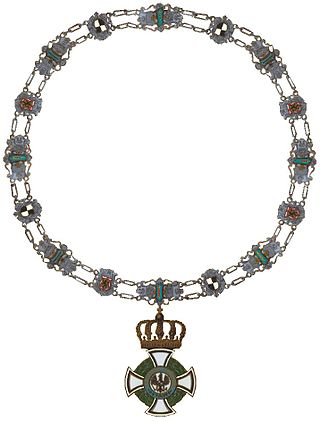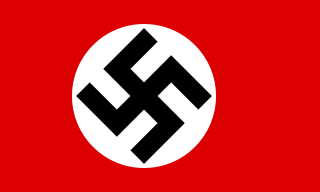The National Prize of the German Democratic Republic (East Germany) (German: Nationalpreis der Deutschen Demokratischen Republik) was an award of the German Democratic Republic (GDR) given out in three different classes for scientific, artistic, and other meritorious achievement. With scientific achievements, it was often given to entire research groups rather than individual scientists.

The House Order of Hohenzollern was a dynastic order of knighthood of the House of Hohenzollern awarded to military commissioned officers and civilians of comparable status. Associated with the various versions of the order were crosses and medals which could be awarded to lower-ranking soldiers and civilians.

Germany was the host nation and top medal recipient at the 1936 Summer Olympics in Berlin. 433 competitors, 389 men and 44 women, took part in 143 events in 22 sports.

The Call of the Sea or The Oceans Are Calling is a 1951 East German drama film directed by Eduard Kubat and starring Hans Klering, Käte Alving and Evamaria Bath. A defector to West Germany returns to the East, having become disillusioned by capitalist society.
Stärker als die Nacht is an East German film directed by Slátan Dudow. It was released in January 1954.
Swelling Melodies is a 1955 East German musical film directed by E.W. Fiedler and starring Erich Arnold, Jarmila Ksírová and Sonja Schöner. It is an adaptation of the operetta Die Fledermaus by Johann Strauss II and Richard Genée and was part of a tradition of operetta films in German cinema.. It was released in 1955, and sold 4,968,582 tickets.

Heimliche Ehen is a 1956 East German comedy film directed by Gustav von Wangenheim. It stars Paul Heidemann and Gerd Michael Henneberg.
The Transformation of Dr. Bessel is a 1927 German silent film directed by Richard Oswald and starring Jakob Tiedtke, Sophie Pagay and Hans Stüwe. The film was based on a novel by Ludwig Wolff. It premiered at the Ufa-Palast am Zoo. It has thematic similarities with Ernst Lubitsch's 1932 film The Man I Killed. Whereas that film featured a French soldier partially assuming the identity of a dead German, in Oswald's film a German is able to survive by pretending to be French.
The Wiskottens is a 1926 German silent film directed by Arthur Bergen and starring Karl Platen, Gertrud Arnold and Harry Liedtke.

House of Life is a 1952 West German drama film directed by Karl Hartl and starring Gustav Fröhlich, Cornell Borchers and Edith Mill. The film's setting is a maternity hospital, portraying the stories of various staff and patients.

Decoy is a 1934 German adventure film directed by Hans Steinhoff and starring Jakob Tiedtke, Viktor de Kowa, and Jessie Vihrog. A separate French-language version, The Decoy, was released the following year with a largely different cast. It was shot at the Babelsberg Studios and on location in Hamburg, Turkey and the North Sea. The film's sets were designed by the art directors Artur Günther and Fritz Maurischat.

The Cuckoos is a 1949 German comedy drama film directed by Hans Deppe and starring Ina Halley, Rainer Penkert and Carsta Löck. It was shot at the Babelsberg Studios in East Berlin. The film was made in the Soviet Zone, in what would soon become East Germany. The film's sets were designed by the art director Wilhelm Vorwerg.

Freight from Baltimore is a 1938 German drama film directed by Hans Hinrich and starring Hilde Weissner, Attila Hörbiger, and Hans Zesch-Ballot. Interiors were shot at the Tempelhof Studios in Berlin. The film's sets were designed by the art directors Carl Böhm and Erich Czerwonski. It was partly shot on location at the Port of Hamburg.








